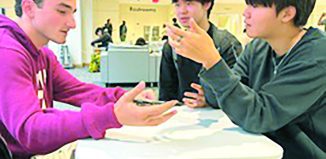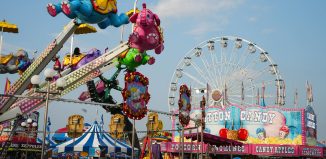Long Island Museum highlights Brookhaven National Lab with Atoms to Cosmos exhibit
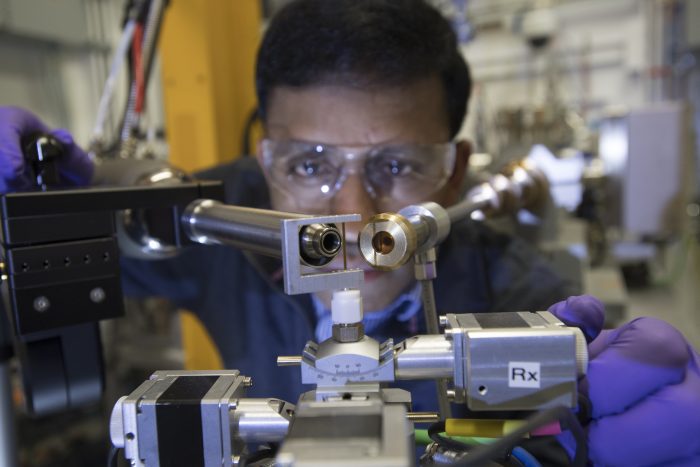
By Melissa Arnold
Over the past 75 years, Brookhaven National Lab (BNL) in Upton has become an international hub for innovative research and problem-solving. Their hard work has led to advancements in energy, medicine, physics and more, as well as seven Nobel Prizes.
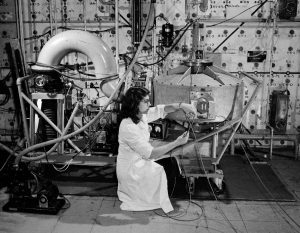
This year, the Long Island Museum in Stony Brook will celebrate the lab’s myriad achievements and explore their deep roots in the area. The new exhibit, titled Atoms to Cosmos: The Story of Brookhaven National Laboratory, opens April 21.
BNL and the Long Island Museum started working on ideas for a future exhibition back in 2018 with plans to open in April of 2020. But as with other museums, the pandemic led to a halt in operations.
In some ways, the rescheduled timing of the exhibit is better than their initial plans.
“While the exhibition was temporarily shelved, both the lab and the museum wanted very much to still make it happen. We had done so much work in advance and preparation for it in 2020, and so we really wanted to get back to this opportunity,” said Joshua Ruff, Deputy Director and Director of Collections and Interpretation for the Long Island Museum. “We are especially pleased we were able to do it now, as it fits nicely with the lab’s 75th anniversary celebration.”
Brookhaven National Laboratory was founded in 1947 at the former site of the U.S. Army’s Camp Upton, becoming the first large research facility in the Northeast. At the time, they were exploring peaceful ways to utilize atomic energy.
“The BNL site has been in federal ownership since 1917 when it became the location of Camp Upton. Before that, the site was used for the cordwood industry and there was a small farm near the eastern edge of what is now the lab,” explained Timothy Green, BNL’s Environmental Compliance Section manager. “After World War I, all of the buildings were sold at auction and the site sat empty until around 1934, when it was declared the Upton National Forest and the Civilian Conservation Corps started planting trees. At the end of World War II [and a second period as Camp Upton], the land was transferred to the Atomic Energy Commission and became Brookhaven National Laboratory.”
It took some time for local residents to adjust to having a laboratory in the area, Ruff said.
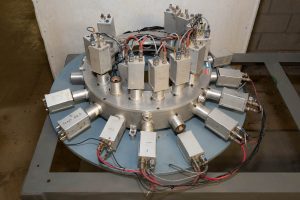
Photo courtesy of BNL
“The lab has often been misunderstood in its past, in fact from its origins. Many Suffolk County residents were not entirely sure that atomic research was safe, nor did they fully understand the relevance and significance [of that research] to their lives,” he explained. “The lab devoted years of hard work and financial resources to strengthen public dialogue and communication, which the exhibition details.”
Today, the lab employs almost 3,000 people and spans 5,320 acres.
The exhibit is co-curated by Joshua Ruff and Long Island Museum curator Jonathan Olly. They’ve included more than 140 items that showcase the lab’s growth and varied discoveries from the 1950s to the present day. The Smithsonian Museum of American History in Washington is lending four of the objects, including a 1,000-pound, 94-inch square magnet lamina from the Cosmotron, BNL’s first major particle accelerator.
Another 40 objects are coming directly from the lab. Their contribution includes equipment from their facilities, personal belongings of former director Maurice Goldhaber, and “Atoms for Peace,” a famous painting that came to symbolize the lab’s work in its early years.
“A lot of the scientific research at BNL over the years has involved [developing] and testing cutting edge technologies. When these machines are no longer useful they’re usually recycled. Fortunately we do have two examples in the exhibition of early PET (Positron Emission Tomography) scanners, one from 1961 and another from 1981,” Olly said. “In the case of these early machines, the focus was on the brain — the machines used radiation sensors arranged in a ring to produce a picture of a slice of your brain. Brookhaven scientists have used this PET technology (specifically the PETT VI scanner in the exhibition) in studying drug and alcohol addiction, eating disorders, ADHD, aging, and neurodegenerative disorders. The 1961 version is a prototype that was never used on patients.”
Also on view are an original chalkboard from the Graphite Research Reactor that still has writing on it; a 7-foot window from a bubble chamber that helped track the paths of atomic particles; and a detector that aided BNL chemist Raymond Davis Jr. in his Nobel Prize-winning neutrino research.
Recently, the lab was a part of the ongoing effort to study and contain COVID-19. The exhibit will include a model of the virus, with the familiar spiky shape that’s become commonplace since the pandemic began.
“Scientists at the lab’s National Synchrotron Light Source II worked on imaging the virus and the proteins … that allowed it to attach to human cells. At the same time, BNL computer scientists began developing algorithms to evaluate existing chemicals and drugs that could potentially prevent infection. One past experiment by [BNL biophysicist] William Studier, the T7 expression system, ended up being critical to the rapid development of two of the vaccines,” Green said.
Both the Long Island Museum and BNL staff hope that visitors to the exhibit come away with a deeper interest in science and an appreciation for the lab’s work.
“There are 17 national laboratories scattered throughout the United States, and Long Islanders can be proud to have one in their backyard. Long Island children have been inspired to pursue careers in science as a result of attending educational programs at the lab during public visitor days dating back to the 1950s. And the lab is invested in addressing our real-world problems, whether the dangers posed by DDT on Long Island in the 1960s or COVID now. This summer BNL should be resuming their “Summer Sundays” visitor program, and I encourage everyone to visit the lab, walk around, talk to staff, and get a glimpse of our scientific present and future,” Olly said.
Atoms to Cosmos: The Story of Brookhaven National Lab is on view now through Oct. 16 in the Long Island Museum’s History Museum and Visitor Center’s Main Gallery, 1200 Rt. 25A, Stony Brook. Regular museum hours are Thursday through Sunday from noon to 5 p.m. Masks are required at this time, though health and safety guidelines are subject to change Admission is $10 for adults, $7 for seniors, and $5 for students 6 to 17 and college students with I.D. Children under six are admitted for free. Tickets are available at the door; pre-registration is not required. For more information visit longislandmuseum.org or call 631-751-0066.
Learn more about Brookhaven National Lab at www.BNL.gov.

